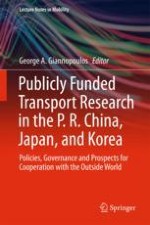This book discusses transport research and innovation, highlighting prospects for cooperation between different countries. To create a basis for such cooperation, the book first describes the status quo in individual countries, focusing on China, Japan and Korea, and identifies the main technological trends as well as current innovation policies in these countries, discussing their main advantages and the challenges to establishing collaborations between them. The book is a valuable resource for transport researchers, research authorities and transport organizations, not only in the three countries considered, but also in the US and the EU. By providing a revealing snapshot of current transport research and policies, it fosters exchanges and collaborations between nations.
